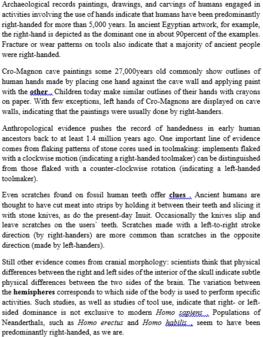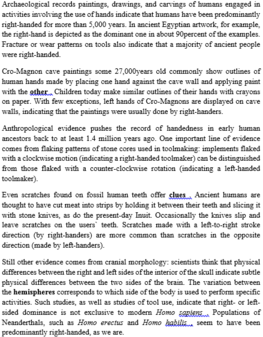Read the following passage and mark the letter A, B, C or D to indicate the correct answer to each of the questions from 36 to 42.
Although management principles have been implemented since ancient times, most management scholars trace the beginning of modern management thought back to the early 19005, beginning with the pioneering work of Frederick Taylor (1856-1915) Taylor was the first person to study work scientifically. He is most famous for introducing techniques of time and motion study, differential piece rate systems, and for systemtically specializing the work of operating employees and managers. Along with other pioneers such as Frank and Lillian Gilbreth, Taylor set the stage, labeling his philosophy and methods “scientific management’. At that time, his philosophy, which was concerned with productivity, but which was often misinterpreted as promoting worker interests at the expense of management, was in marked contrast to the prevailing industrial norms of worker exploitation.
The time and motion study concepts were popularized by Frank and Lillian Gilbreth. The Gilbreths had 12 children. By analyzing his children’s dishwashing and bed making chores, this pioneer efficiency expert, Frank Gilbreth, hit on principles whereby workers could eliminate waste motion. He was memorialized by two of his children in their 1949 book called “Cheaper by the Dozen”.
The Gilbreth methods included using stop watches to time worker movements and special
tools (cameras and special clocks) to monitor and study worker performance, and also involved identification of “therbligs” (Gilbreth spelled backwards) - basic motions used in production jobs. Many of these motions and accompanying times have been used to determine how long it should take a skilled worker to perform a given job. In this way an industrial engineer can get a handle on the approximate time it should take to produce a product or provide a service. However, use of work analysis in this way is unlikely to lead to useful results unless all five work dimensions are considered. physical, psychological, social, cultural, and power.
Question 41: Where in the passage does the author comment that the principles of scientific management were often misunderstood?
A. Lines l-5
B. Lines 7-9
C. Lines 12-15
D. Lines 16-20






Đáp án B
Dịch nghĩa. Chỗ nào trong bài văn tác giả nói rằng những nguyên tắc quản lí khoa học bị hiểu nhầm?
A. dòng 1-5 B. dòng 7-9 C. dòng 12-15 D. dòng 16-20
Giải thích: Thông tin nằm ở đoạn 1 “At that time, his philosophy, which was concerned with productivity, but which was often misinterpreted as promoting worker interests at the expense of management”.